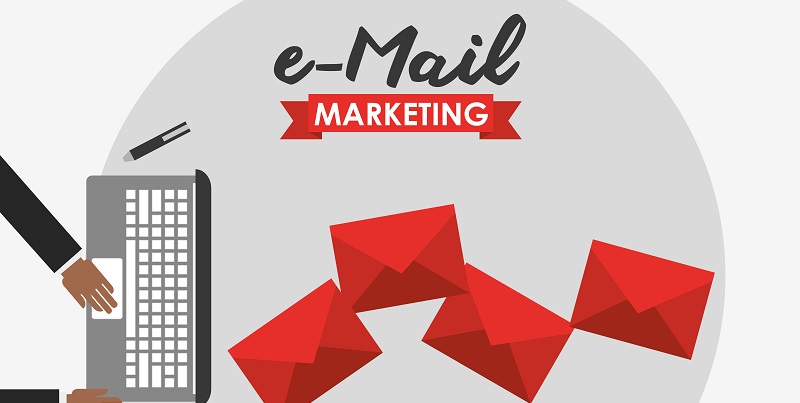In today’s digital age, email marketing has emerged as a powerful tool for connecting with customers and driving business growth. However, the success of any email campaign hinges on one crucial factor: deliverability. Ensuring that your emails reach the intended recipients’ inboxes is essential for effective communication and engagement. In this comprehensive guide, we will delve into the intricacies of email marketing deliverability, exploring its importance, measurement, challenges, best practices, and strategies for improvement.
Understanding Deliverability Rates
To gauge the effectiveness of your email campaigns, it is vital to understand deliverability rates. Deliverability rates are typically expressed as a percentage and are calculated by dividing the number of emails in the inbox by the total number of emails sent. For instance, if you sent 1,000 emails and 810 of them were successfully delivered to the inbox, your deliverability rate would be 81%. This statistic highlights the percentage of emails that actually reach subscribers’ inboxes, ensuring they have a chance to be seen and engaged with.
Key Metrics for Measuring Email Marketing Deliverability
Measuring email marketing deliverability goes beyond just looking at the deliverability rate. There are three key metrics to monitor: delivery rate, open rate, and click-through rate (CTR). The delivery rate measures the percentage of successfully delivered emails out of the total number of emails sent. The open rate represents the percentage of recipients who opened your email, reflecting its level of engagement. Lastly, the click-through rate measures the percentage of recipients who clicked on a link within your email, indicating their interest in your content. Monitoring these metrics enables you to evaluate the effectiveness of your campaigns and make necessary improvements.
Setting a Target Deliverability Rate
Determining a target deliverability rate may seem complex, but it is crucial for effective marketing strategies. Aim for a deliverability rate between 85% and 95% as a benchmark. This range ensures that most of your emails are reaching subscribers’ inboxes, maximizing the potential for engagement and conversions. Regularly monitoring and fine-tuning your campaigns will help you maintain a high deliverability rate and strengthen customer relationships.
Challenges and Obstacles in Email Deliverability
Despite your best efforts, various challenges can impact email deliverability. Spam filters, while designed to prevent unwanted emails, can sometimes mistakenly block legitimate messages. This underscores the importance of crafting emails that comply with spam filter guidelines without compromising your marketing message. Additionally, bounces occur when an email server receives an invalid address from a recipient’s internet service provider (ISP). Minimizing bounces and adhering to best practices for list management can improve deliverability. Furthermore, email blocklisting can pose a significant obstacle, as an entire domain can be blocked by email providers for sending spammy messages or overwhelming recipients with excessive emails.
Importance of Sender Reputation
Sender reputation plays a pivotal role in email marketing deliverability. It refers to how well-known and trusted you are as an email sender among major internet service providers (ISPs). ISPs consider your sender reputation when deciding whether to deliver your emails to subscribers’ inboxes or consign them to the dreaded spam folder. Maintaining a positive sender reputation involves adhering to email marketing best practices, establishing authentication protocols, and actively managing recipient engagement.
Considerations for Avoiding the Spam Folder
To enhance email deliverability, it is essential to create content that bypasses spam filters and lands in subscribers’ inboxes. Many email clients utilize sophisticated algorithms to scan the contents of your email and automatically determine if they classify it as spam. To avoid the spam folder, adhere to best practices such as personalizing emails, avoiding excessive use of promotional language, and regularly testing your campaigns to identify and rectify any potential spam triggers. Crafting engaging and relevant content will not only safeguard deliverability but also increase open and click-through rates.
Best Practices for Improving Email Marketing Deliverability
Enhancing deliverability rates requires adopting a proactive approach and implementing best practices consistently. First and foremost, maintain a clean and updated email list by regularly removing inactive or non-responsive subscribers. Follow email service provider guidelines to ensure compliance with industry requirements. Engaging with your recipients through valuable content, interactive features, and responsive design will keep them interested in your emails and improve deliverability.
Utilizing Email Analytics for Deliverability Insights
Monitoring and analyzing email performance data is key to optimizing deliverability rates. Leveraging email analytics tools allows you to track and measure important metrics, identify trends, and gain valuable insights into subscriber behavior. By analyzing data such as open rates, click-through rates, and conversion rates, you can refine your campaigns, segment your audience, and tailor your content to maximize engagement and deliverability.
Email marketing deliverability is an indispensable component of a successful email campaign. Achieving a high deliverability rate requires understanding the metrics, challenges, and best practices associated with email marketing. By setting a target deliverability rate, focusing on maintaining a positive sender reputation, and employing strategies to avoid the spam folder, you can effectively reach your audience and increase customer engagement. Regularly analyze email performance data and adapt your campaigns accordingly to continually improve deliverability and expand your reach. Embrace the power of email marketing deliverability to unlock new opportunities for business growth and success.

